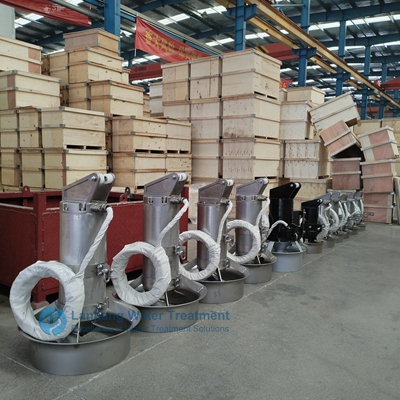
In the transportation process of sewage treatment equipment, in order to ensure the safety, integrity and transportation efficiency of the equipment, the following aspects need to be paid attention to:
First, preparation before transportation
1. Choose the appropriate mode of transport: according to the volume, weight and transportation distance of the equipment and other factors, choose the most suitable mode of transport, such as road, rail, water or air. At the same time, it is necessary to consider the feasibility of transportation routes, including road conditions, bridge load restrictions, etc.
2. Accurate measurement of packaging size and weight: In order to choose the right means of transport and calculate transportation costs, it is necessary to accurately measure the packaging size and weight of the equipment.
3. Choose the appropriate packaging materials and methods: ensure that the packaging of the equipment is firm and reliable, and can resist vibration, collision and extrusion during transportation. The packaging materials should be waterproof, moisture-proof and wear-resistant materials, and appropriate fixing and buffering measures should be adopted, such as reinforced packaging and cushion anti-shock materials.
4. Check the status of the equipment: Before transportation, the equipment should be comprehensively inspected to ensure that the equipment is in good condition, the parts are complete, and there is no damage or missing.
5. Formulate emergency plans: Formulate corresponding emergency plans for possible emergencies, such as traffic accidents, sudden changes in weather, etc., to ensure rapid and effective response.
Second, precautions during transportation
1. Check the integrity of the packaging: During transportation, the packaging of the equipment should be regularly checked whether it is intact. If it is damaged or does not meet the requirements, it should be handled or replaced in time.
2. Ensure the stability of the equipment: During the transportation process, ensure that the equipment is stable and does not shake, tilt or slide, so as to avoid damage to the equipment or affect the safety. This can be achieved by reinforcing the packaging and using fixed devices.
3. Prevent moisture, shock and collision: Take necessary protective measures, such as using rain cloth to cover the equipment, filling the inside of the packaging with shock-proof materials, etc., to prevent the equipment from moisture, shock and collision.
4. Comply with traffic rules and safety regulations: In the process of transportation, traffic rules and safety regulations should be strictly observed to ensure transportation safety. At the same time, attention should be paid to changes in road conditions and timely adjustment of transport speed and route.
Third, post-transportation processing
1. Check the status of the equipment: After the equipment arrives at the destination, check whether the packaging of the equipment is intact and whether the equipment is in normal operation. If there is any problem, it should be dealt with or fed back in time.
2. Installation and commissioning: According to the equipment installation requirements, on-site installation and commissioning work. Ensure that the equipment can operate normally and achieve the expected processing effect.
3. Processing of packaging materials: The packaging materials of the equipment are recycled, classified and processed to protect the environment and resources.
To sum up, the transportation of sewage treatment equipment is a complex and important link, and it is necessary to fully prepare for transportation, precautions during transportation and post-transportation treatment to ensure the safety, integrity and normal operation of the equipment.
Post time:2024-07-11